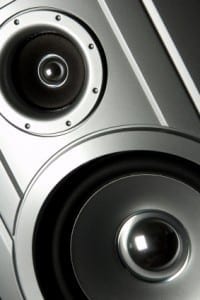Home Recording Academy: The Best Studio Monitor Placement
Studio monitors are one of the most essential elements to producing high quality mixes. There’s a reason we spent so much time and effort creating the perfect listening room when we redesigned our Nashville mastering studio (you can read more about the specifics of our set up on the Sage Audio homepage ). Though we’ve covered getting the best monitors for you home studio budget , I wanted to delve a little further into the actual setup of those monitors once you’ve found the perfect pair for your needs.

We’ve talked about this a little in a previous post , as well, but the correct placement of studio monitors can help you easily (and quickly) produce great sounding mixes without having to continually go back and fine-tune mixes. This is because having a correct representation of stereo imaging will help you hear the mixes as they actually sound, and bring consistency to your mixes. Conversely, an incorrect placement can cause major headaches and a lot of wasted time.
Make the Best of What You Have
I want to put a little disclaimer at the beginning of this article. Like most aspects of home studio recording, you most likely won’t have the space or budget to follow every rule of monitor placement and acoustic treatment like a major studio would. This shouldn’t be taken to mean that you won’t be able to get great sounding mixes. All home recording (and mixing) is part of a process of creating the best with what you have and learning your room. The following are some guidelines to make that room a little better.
A second note: I’ll only be discussing near-field monitors here, which is typically all that are needed in a home studio.
The Equilateral Triangle
A good rule to follow, if possible, is to set up an equilateral triangle, with the monitors representing two points and you representing the third. You’ll usually want the monitor speakers to be about 3 to 5 feet from your ears. Make sure the monitors are at ear level, and more specifically that the tweeters are exactly in line with your ears.
Using the Room to Improve Monitor Placement
Okay, so making the triangle is the easy part, making the best of the room you have to work in is the hard part. The acoustics of every room are different, and whether you notice it or not, sound is constantly bouncing off walls, ceilings, floors and doors -- and all at different rates. I won’t get too far into the theory of acoustics, but there are a few good guidelines to follow when it comes to monitor placement.
Center your set up between side walls, but not front to back walls. To preserve correct stereo imaging, you’ll want the amount of room on either side of your monitors to be equal. However, if you set up your desk in the direct center of the room, all of the frequencies and harmonics will essentially bounce to the center at the same time and interfere with each other and cancel each other out.
Avoid Multiples in Measurement. When choosing the front-to-back position, avoid exact multiples. For instance, if you are 2 feet away from the front wall of your studio, don’t position the monitors 4 feet or 8 feet from the back wall.
Following these two simple guidelines will vastly improve your listening situation with very little work.
A Few Additional Tips
Finally, here are a few more tips to improve your monitor placement.
- Don’t turn your monitors on their side. Though certain types of monitors are made to be placed this way, near-field monitors are designed to be upright with the tweeter on top of the woofer.
- If possible, place the monitors on stands behind your mixing desk, not on the desk itself. It is best if the tops of the stands have cushioning or insulation to reduce vibrations. This prevents the desk from reflecting sound waves, and also from creating vibrations in one monitor that might affect the other.
Make sure there is carpet in the room. Even if you don’t have the budget for expensive acoustic treatments for your room, ensuring you have carpet is the best measure you can take to reduce sound reflections from interfering with your mix.




